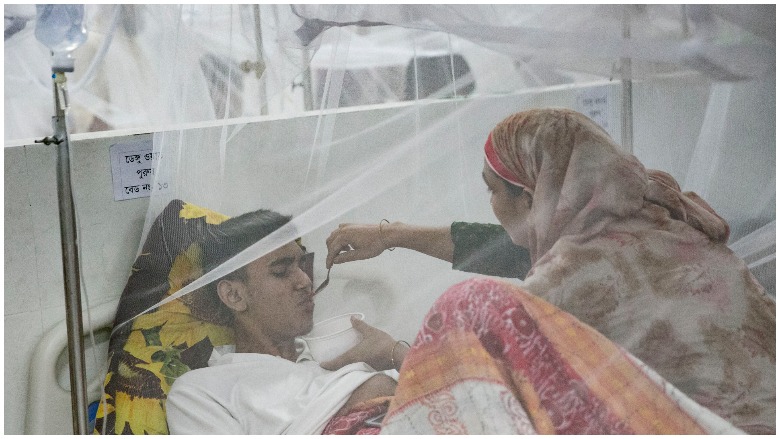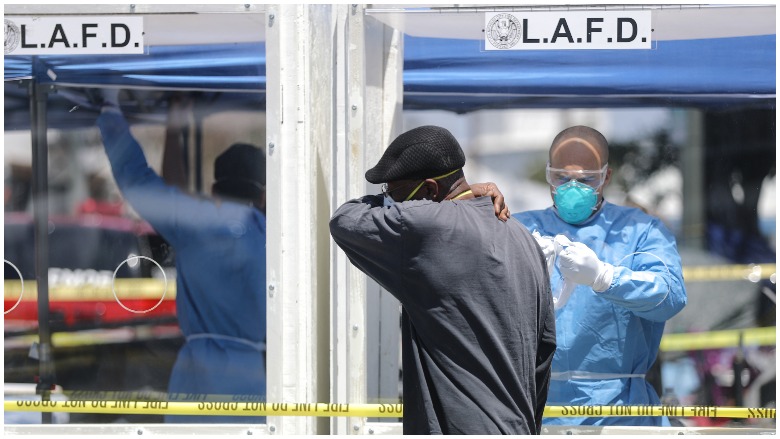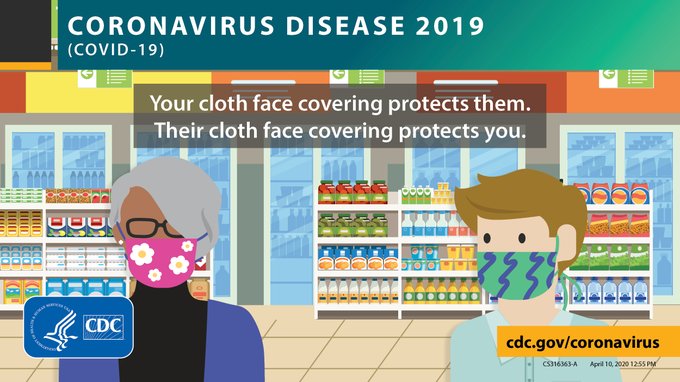
Getty A woman has her temperature checked in Beijing.
Nearly every health organization’s symptom checklist for coronavirus includes fever. Many hospital protocols and reopening plans around the country include a plan for screening people’s temperatures to check for a fever. But what if you don’t have a fever and you feel ill; could you still have coronavirus?
The answer is that you may still have coronavirus. Although fevers are a pretty common occurrence with any type of respiratory infection, coronavirus can present with other symptoms or even no symptoms at all, according to the Centers for Disease Control and Prevention (CDC).
The lack of fever after 14 days, however, is used as a measure by the CDC for whether potentially infected people are safe to come out of quarantine and many people rely on it to determine if they feel sick.
Here’s what you need to know:
Can You Have a COVID-19 Infection Without A Fever?

GettyThis is a thermal screener set up in a Beijing metro station.
Yes, you can have an infection without a fever. That includes COVID-19. However, it’s one of the most common three symptoms for COVID-19. Still, fever is not always present.
Based on 55,924 laboratory confirmed cases, the World Health Organization determined that a fever occurred in 87.9% of cases.
The study Characteristics and Outcomes of 21 Critically Ill Patients With COVID-19 in Washington State found that fever was present as an initial symptom in 52% of cases (shortness of breath was more common, appearing in 76%).
The study Epidemiological and clinical characteristics of 99 cases of 2019 novel coronavirus pneumonia in Wuhan, China: a descriptive study found that fever was present in 83% of researched cases.
The research study Clinical Characteristics of Coronavirus Disease 2019 in China found fever occurring in 43.8% of cases on hospital admission and 88.7% during hospitalization. That indicates that fever is often a symptom that appears as the infection progresses in its later stages (if it gets that far; most cases end up mild.)
Thus, lack of a fever can turn into one. However, lack of a fever doesn’t rule out COVID-19. In addition, presence of a fever doesn’t necessary mean you have COVID-19 as it can point to other ailments too, including the flu.
The most common symptoms, according to WHO, are fever, a dry cough and tiredness. A study conducted on 41 patients found that 98% presented a fever, 76% presented a cough and 44% presented fatigue.
A study conducted Feb. 5 on diagnosing the COVID-19 virus in China determined that children were the most likely populations to present without a fever. The list of clinical presentations they listed included, “Fever, fatigue, dry cough; some pediatric patients may have no fever.”
“The presence of fever suggests an infectious cause, but fever is not always present with an infection,” the CDC advises. The National Institute of Health also found that the initial symptoms of a cold, which is an upper respiratory infection, often do not include fever.
The World Health Organization (WHO) said of the SARS-CoV, or coronavirus of 2003, “Although fever is the most frequently reported symptom, it is sometimes absent on initial measurement, especially in elderly and immunosuppressed patients.”
What Does A Fever Do?

GettyDengue fever, caused by a viral infection, is characterized by causing high fevers.
Most people’s average temperature, according to Medline Plus, is around 98.6° F (37° C). The CDC defines a fever as a measured temperature of 100.4° F or greater; feeling warm to the touch is a more informal way of determining whether someone has a fever.
The Mayo Clinic noted that although fevers may be uncomfortable for adults, they are not typically cause for concern until they reach 103° F (39.4° C) or occur with other symptoms of illness. Fever in children, however, is usually more concerning.
Medline Plus notes that fevers kickstart your body’s immune response to the presence of an infection. Fevers are also the first defense against bacteria and viruses, which typically have a more difficult time staying alive when your body is at a higher temperature.
What Other Symptoms Can You Experience?

GettyA dry cough is one of the most common symptoms of coronavirus.
There are several other symptoms that might mean you have coronavirus and they can take as little as two and as many 14 days to show, according to the CDC.
Less common symptoms include aches and pains, nasal congestion, sore throat and diarrhea. The CDC also included shortness of breath or difficulty breathing and on April 26, added chills, repeated shaking with chills, muscle pain, headache, sore throat and a loss of taste or smell to the list.
The Centers for Disease Control and Prevention reports that people with COVID-19 “have had a wide range of symptoms reported – ranging from mild symptoms to severe illness.” These symptoms may appear 2-14 days after exposure to the virus:
The Harvard Medical Center has detected even more symptoms. “Some people have gastrointestinal (GI) symptoms, such as loss of appetite, nausea, vomiting, diarrhea, and abdominal pain or discomfort associated with COVID-19,” researchers noted.
Like much about the virus, the breadth of symptoms is unknown. As scientists conduct more research and more people are tested, it may change. However, the CDC is advising anyone who experiences “emergency warning signs” to seek medical attention right away if any of the following symptoms appear:
-
- Trouble breathing
- Persistent pain or pressure in the chest
- New confusion or inability to arouse
- Bluish lips or face
Can You Still Transmit the Disease with No Fever?
The CDC notes that even those with no fever or other symptoms can still transmit the disease, which is why it’s important to follow social distancing guidelines.
The presence of symptoms appears to vary based on the presence of pre-existing conditions and the age range of the patient. For example, The CDC conducted research on a long-term care facility where 30% of the residents tested positive for the disease and discovered 57% were presymptomatic (meaning they did not display any symptoms for ten days).
Children have been called “silent spreaders,” due to their ability to pick up the virus, manifest few — if any — symptoms and unknowingly spread it to others. Research from the CDC indicates children present symptoms less often than adults: 73% of pediatric patients had symptoms of fever, cough or shortness of breath compared to 93% of adults within the same time frame.
In an article for countries receiving new travelers, the World Health Organization advised airport personnel not to solely rely on fever screenings to ensure those who are potentially asymptomatic or concealing a fever miss detection.
“Entry screening: temperature screening alone may not be very effective as it may miss travelers incubating the disease or travelers concealing fever during travel, or it may yield false positive (fever of a different cause),” WHO wrote. If temperature screening is implemented, they said, it should be accompanied with health messages, a primary questionnaire to document symptoms and data collection/analysis.
READ NEXT: COVID-19 Symptoms: Day-by-Day Chart of Coronavirus Signs

